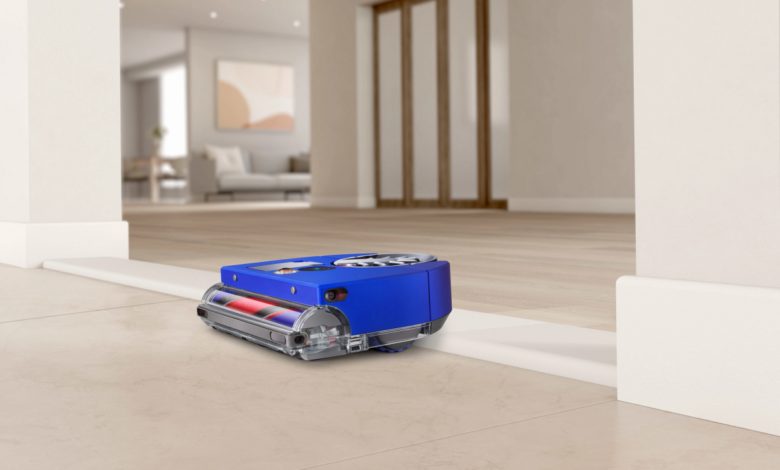Dyson enters the US robot vacuum market with the 360 Vis Nav

Dyson’s one of the biggest players in the cordless vacuum and air purifier space (and, more recently, hair styling as well), but it’s kept a relatively low profile in the robot vacuum market. Today, the company’s bringing its latest robot vacuum to the US and Canada. After being available in other regions, the Dyson 360 Vis Nav is now available to order in the US for a whopping $1,199 from Dyson direct and other retailers like Amazon.
While we haven’t had the chance to test the 360 Vis Nav yet, we were able to get more details from Dyson about how the new robot vacuum works. A few things stand out as departures from traditional robot vacuums, the first being the 360-degree vision system that uses a camera on the top-center of the robot to map out your home as it cleans. Home mapping isn’t new in this space, but Dyson claims that the images captured by this vision system will help the machine better understand the layout of your home, including where obstacles like furniture live, make note of corners and edges and help it recognize where it’s cleaned and where it still needs to go to finish a job. The camera is surrounded by eight LEDs that balance exposure and better help the robovac navigate in low-light situations as well.
Second, whereas most robot vacuums use small sweepers to collect dust bunnies hiding in room corners and along furniture edges, Dyson’s machine has a side-edge actuator that opens automatically when cleaning spaces like these. It then uses suction to collect debris, which Dyson claims provides an even more thorough cleanup. I’m eager to see how this works in practice because cleaning the corners of rooms is one of the hardest things for a robot vacuum to do right, even for those that have the advantage of a D-shaped design like the 360 Vis Nav.
Finally, Dyson’s robot vacuum uses a Piezo sensor similar to those found in the company’s stick vacs to detect dirt and, subsequently, help the machine do a couple of things: kick up its suction power to the max 65 air watts when necessary, and create a heatmap in the My Dyson app of the dirtiest parts of your home. This sounds like a more useful application for a piezo sensor than that of Dyson’s cordless vacuums; I found in my testing that seeing how many dirt particles you’re sucking up with a manual vacuum might be fun to watch change on a digital display as you clean, but it’s not very actionable once you’re done vacuuming. But in this application, particularly with the heatmap, that information can show you areas of your home you may want to clean more often and you can program the 360 Vis Nav to only clean those spots from within the app.
The Dyson 360 Vis Nav has a similar design to some of the higher-end robot vacuums on the market right now, with two squared-off edges that help it get into room corners more easily. Under the hood, it has a Hyperdymium motor and a removable filter, plus a triple-action brush bar that spans the entire width of the machine, something you don’t often see in competing robot vacuums. Naturally, the cleaning surfaces borrow a lot from those on the company’s stick vacs: there are carbon fiber bristles and stiff nylon bristles for deep-cleaning carpets and a “fluffy” softer nylon surface that’s better on hard floors. The whole machine is HEPA-compliant, which means air that’s been sucked up cannot escape through other parts of the machine, making it better at trapping microscopic particles like allergens and dust mites.
Dyson may have waited a bit to enter the US robot vacuum market, but it appears it wanted to find the right ways of integrating technology from its cordless vacuums into this space before doing so. On paper, that technology could set the 360 Vis Nav apart from other robot vacuums when it comes to raw suction power. When we’re able to get testing time with the device, I’ll be interested to try out its four cleaning modes (Auto, Boost, Quick and Quiet), see if the advertised 65-minute runtime (in Auto Mode) actually holds up and judge how robust and easy to use the My Dyson app is.
But what already sets the 360 Vis Nav apart from the competition is its sky-high, $1,199 price tag. That’s a price we’ve only seen on robot vacuums that come with self-emptying bases, and the 360 Vis Nav doesn’t have one of those (its dock only recharges). But this won’t be a surprise if you’re familiar with other Dyson products, which are often priced at a premium.
Source link




